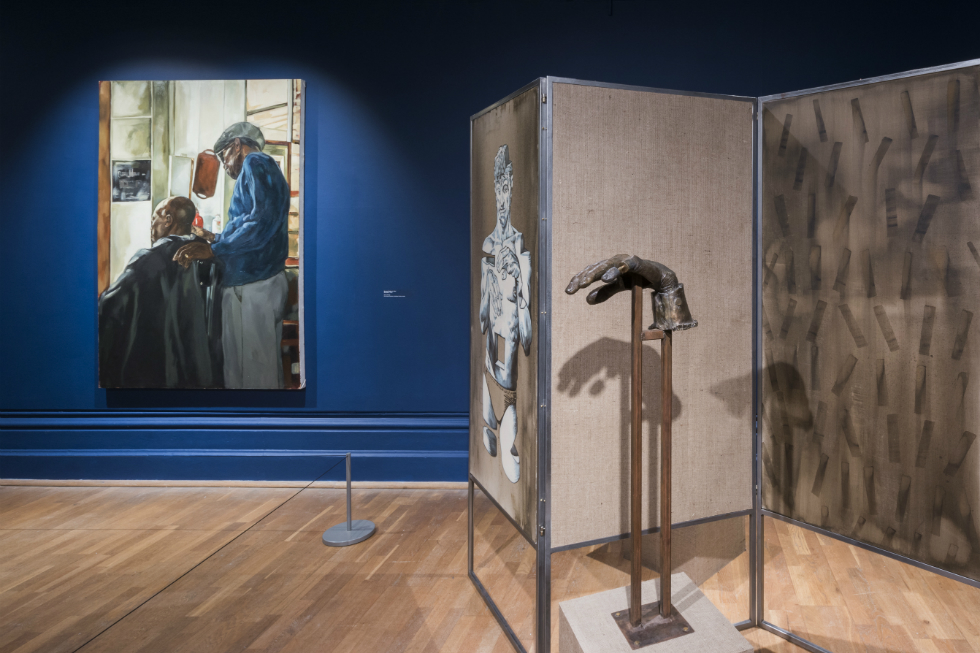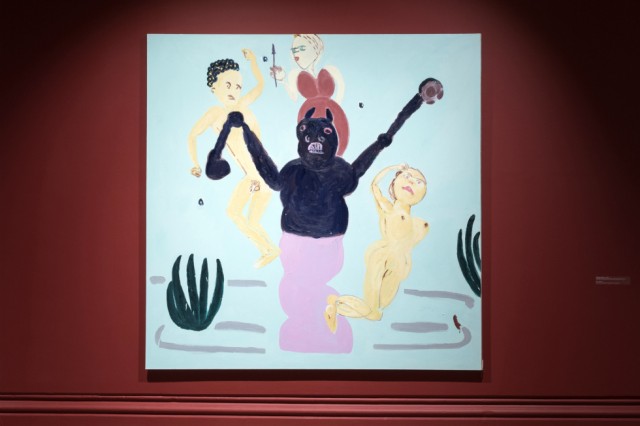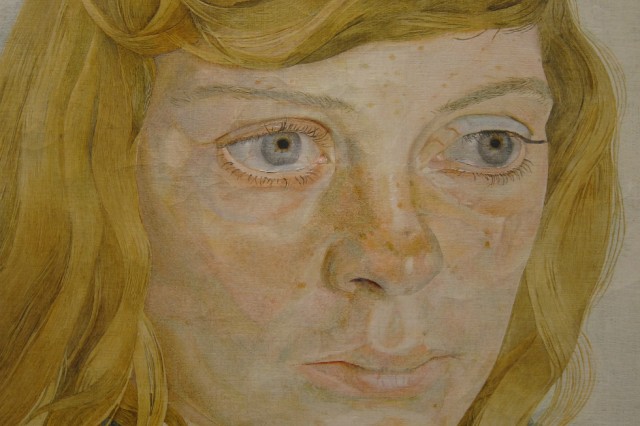The Big Interview: Jennifer Higgie On One Day, Something Happens: Paintings Of People

As her figurative painting exhibition comes to a close in Southport and travels on to Eastbourne, the frieze magazine co-editor, art writer and newbie curator talks about her emotional attachment to the works in the show, her “no boobs rule”, and the power of Lucian Freud…
“I’m a bit sick of seeing naked women in exhibitions.”
Well, there are a lot of them out there, and art critics will tend to see this repetition most of all. I’m discussing naked women and bodies in general with Jennifer Higgie: renowned art writer, co-editor of frieze and editor of Frieze Masters, and newbie curator. Her first exhibition, One Day, Something Happens: Paintings of People, supported by Hayward Touring and Arts Council Collection, has been travelling across the UK since March 2015, and is currently at The Atkinson Galleries, Southport, until Sunday. From there, it will visit its fifth and final destination, Towner Art Gallery, Eastbourne, in October.
One Day is an exhibition that spans 110 years of figurative painting, from 1906 to the present day, with roughly 40 core works drawn from the Arts Council Collection by Higgie, plus a selection of starring guests borrowed from each host gallery’s private collection. As such, it is probably to be expected that naked women appeared in many of the paintings that Higgie had at her disposal; given the 20th century tradition of learning to paint via observation of a live (female) model, and the predominance of male artists bought for collections over time. Thus naked women in exhibitions.
So how did she deal with this in One Day?
“I wanted to complicate the representation of gender”, Higgie tells me; “wherever I take the show I try to pull out women artists [from their collection] that will compliment, or have a conversation with, the works from the Arts Council Collection.”
Higgie came up with a “no boobs rule” (she laughs), with two, very fine, exceptions: Alasdair Gray’s Juliet in Red Trousers (1976), and Jeffery Camp’s Laetitia Picking Blackcurrants (1967). Other artists include Walter Sickert, who provides the earliest painting in this exhibition entitled Head of a Woman (1906), to Renee So’s knitted portrayal of a bendy, cartoon-like figure in Drunken Bellarmine (2012), and Georgia Hayes’ Saved by Drowning (Sicilian Fountain 2) (2013); a cheery, childlike depiction of a river nymph in pastel pinks and greens. All, to Higgie, represent themes traversing the human form and the human experience.
“I just have a real emotional attachment to how bodies are painted in space”, Higgie says. “There are infinite variations.

“I’m also very interested in looking at how art has reflected a cultural moment; in terms of what the people are wearing, or how a woman is represented, or what the environment is that they’re depicted in, or what medium they’re using.”
Sickert (1860- 1942) is an interesting choice for the show, given his unsettling portrayal of women, usually prostitutes – which led to him being accused of the infamous Jack the Ripper murders in 2001 by author Patricia Cornwell (since discredited). In the Leeds and Southport versions of One Day, Higgie paired his Head of a Woman – a piercing, rather sickly portrait of a girl composed of blobs of yellow and red against a dark backdrop — with Glenn Brown’s Decline and Fall (1995): a violent, ghostly portrait rendered in thick oils with a satin-smooth finish. “I think they share some really interesting preoccupations, like reproduction and photography — Sickert didn’t mind painting from photographs – and an interest in modernity, and legacy.”
Visitors can expect early paintings on canvas, like Sickert’s, but also a move into “an expanded painting; so like Renee So using weaving or Enrico David using sculptural components [Untitled (puppets: we are the mods) (2003)], and Steven Claydon [Logs from the Black Forest (2007)] as well. And David Noonan, who came very much from a painterly background, but he’s using paint in a sense through screen-printing [Untitled (2007)].”
The rather cryptic title is taken directly from a Sickert quote; written in a letter to a friend:
“On a series of apparently tiresome, flat sittings seeming to lead nowhere – one day, something happens, the touches seem to ‘take’, the deaf canvas listens, your words flow and you have done something.”

Higgie says that when she read it, it was an obvious choice; as such an astute comment on the challenges of the medium, but also as a “homage to the earliest painting in the exhibition.”
It’s been a massive undertaking for a first-time curator; Higgie was surprised that five venues had bid to be incorporated into the tour. “It was wonderful that it seemed to have chimed with what people were interested in and were thinking about”, she says. “At the same time, I didn’t really realise how much work it would be.”
I ask a really mean question: what is her favourite piece? She has many, but one that seems to stand out in each version of the exhibition is – perhaps unsurprisingly – by Britain’s most recognisable painter of people — Lucian Freud. His Girl in a Green Dress (1954) “really holds a wall; [so much so] you can’t hang anything next to it. It has so much resonance, so much power.”
It depicts Freud’s second wife, Caroline Blackwell; her freckled face fills the canvas and stares intently at something beyond the frame. In Southport, it is hung near to Gray’s aforementioned Juliet in Red Trousers: both women’s eyes, set in pale faces, burn bright, and seem to follow you out of the room. The accompanying catalogue includes a quote by Freud that says: “I work from the people that interest me, and that I care about and think about.”
So an exhibition for painters and lovers of painting, but also for people who just love looking at, and perhaps analysing, other people. To give the last word to Higgie:
“I do think people really enjoy figurative painting; and a lot of people who might not necessarily know a great deal about art enjoy figurative painting. There’s something recognisable there that you can tap into immediately.”
Laura Robertson
See One Day, Something Happens: Paintings of People at The Atkinson Galleries, Southport, until Sunday 22 May 2016 — FREE
Exhibition tour continues and ends at Towner Art Gallery, Eastbourne, 15 October 2016-8 January 2017
Other iterations of this Hayward Touring and Arts Council Collection tour have included Leeds City Art Gallery, 6 March-7 June 2015, Nottingham Castle, 20 June-6 September 2015, Highlanes Gallery, Drogheda, October 2015-February 2016
Images, from top: (L) Barbara Walker, Boundary I (2000), (R) Steven Claydon, Logs from the Black Forest (2007). Georgia Hayes, Saved by Drowning (Sicilian Fountain 2) (2013). Lucian Freud, Girl in a Green Dress (1954), detail. All images courtesy One Day, Something Happens: Paintings of People at Exhibitions at Nottingham Castle and the respective artists





